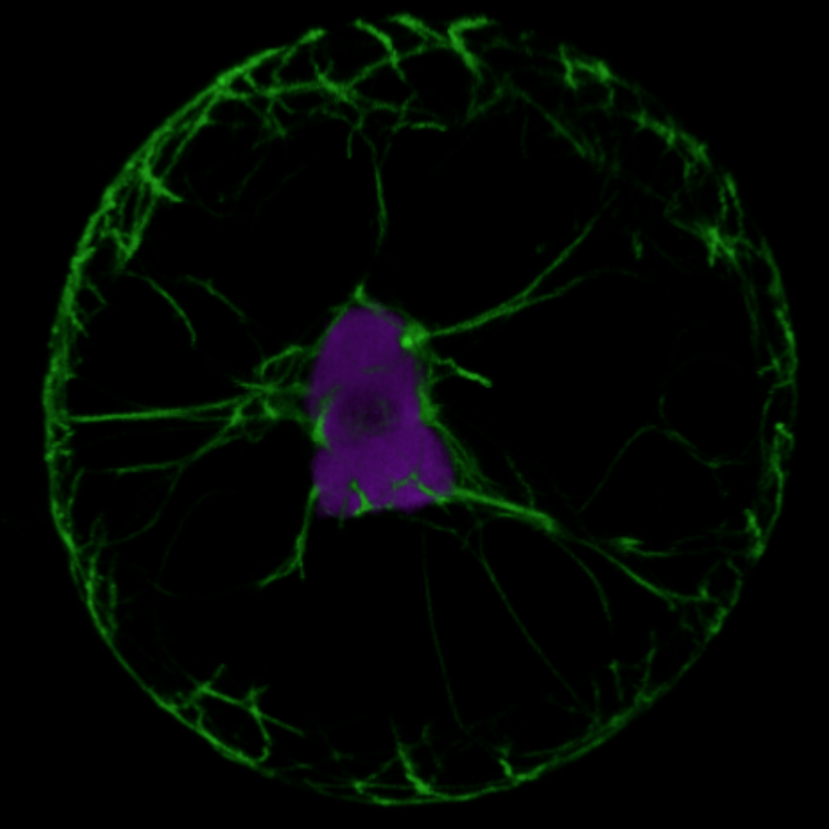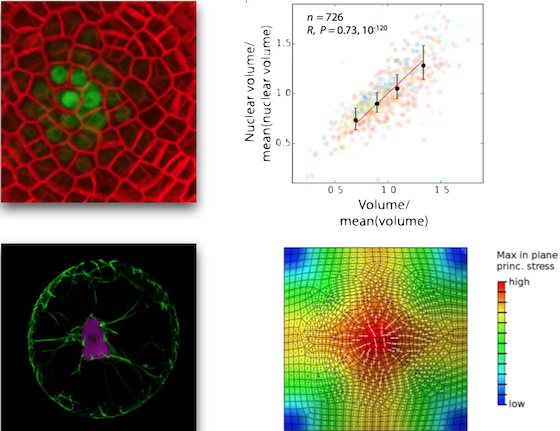
HFSP funding to investigate cellular growth and stresses in plants
SLCU's Professor Henrik Jönsson is part of an international collaboration that has received funding from the Human Frontier Science Program (HFSP) to develop the first integrated model in plants investigating the effects from cellular growth and stresses on nuclear shape and genetic activity.
The development of living organisms is under the control of their genetic code. However, it is increasingly obvious that the gene activities are sensitive to the influence of the environment, including mechanical constraints (mechanotransduction).
Plants are most responsive to the external environment during their early establishment phase when cells begin to differentiate and change their size and shape (morphogenesis), which involves the reorganisation of internal structures and a redistribution of constraints in these structures. This response of plants to the environment indicates the existence of a feedback between the shape of the plant and genetic expression via mechanical constraints, but the mechanism for how this is done is not understood.
Professor Jönsson is part of the international consortium that is bringing together scientists with diverse expertise to create a novel approach to understanding this phenonema. The research team also includes Marie-Edith Chabouté (Institute of Molecular Biology of Plants, Strasbourg), Atef Asnacios (Laboratory Materials and Complex Systems, University Paris-Diderot), and Kentaro Tamura (Department of Botany, Kyoto University, Japan).
Their goal is to combine micro-mechanical measurements, real-time fluorescence microscopy, biochemical analyses and numerical simulations to develop the first integrated model investigating the effects from cellular growth and stresses on nuclear shape and genetic activity. This will be investigated in root hair cells, known to substantially change shape, which influences their nuclei, and in protoplasts, cells removed from the tissue environment (see below figure). The title of the three-year project is: Integrating mechanotransduction in development:how does cell shape dictate chromatin remodeling?

Above figure: The Jönsson group previously showed a correlation between cell size and cell nuclei size in plant stem cells as illustrated above. Top left: Shoot stem cells where the membranes are marked in red and nuclei are marked in green. Top right: Plot showing the size relation between cells and cell nuclei in the stem cell region [modified from Willis et al PNAS (2016)]. In this project an interdisciplinary approach will be used to investigate the connection between cell shapes, nuclear deformations and genetic activity. Bottom left: A cell removed from the tissue can be used for biophysical perturbations, microtubules are marked in green and the nuclei in purple (Formosa-Jordan, Wang, Jönsson, unpublished). Bottom right: Mechanical stress patterns predicted during the initial outgrowth of a root hair from a finite element model simulation [from Krupinski et al Front Plant Sci (2016)]. A challenge of the project will be to integrate this type of model to include an effect on cell nuclei.





